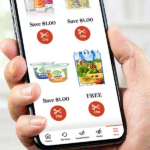
The new year is barely a week old, and the coupon number-crunchers at Kantar Media have already released their findings about the state of coupons in the year just completed. And once again, they’ve found that coupons are simultaneously getting a whole lot better – and a whole lot worse.
Each year at this time, Kantar releases its annual analysis of all the coupons you get throughout the year in your Sunday newspaper’s Free Standing Inserts (FSIs). And in 2015, Kantar found that we received more coupons, worth more money, for the third consecutive year.
That’s the good news. But let’s not get to the bad news just yet.
Some 286 billion insert coupons were released last year, up slightly from 2014. But the dollar figures involved reached new highs. The average face value of last year’s FSI coupons hit an all-time high of $1.80, and the total face value of all FSI coupons issued was $515 billion, shattering the half-trillion dollar mark and besting 2014’s total by 3.6%.
The other piece of good news is that multiple purchase requirements are on the decline. No longer do you have to buy two or three of an item in order to use a coupon, at least not as often as you used to. Continuing a decline that began in 2013, just over a quarter of all FSI coupons in 2015 required the purchase of multiple items. That’s the lowest recorded percentage since 2010.
One final bit of good news is reserved for anyone who likes going grocery shopping in order to fill their shopping cart with batteries and medicine. If you, in contrast, like to go grocery shopping in order to eat – or feed your family – well, here comes the bad news.
The number of coupons for things you can actually eat, continues on a downward trend that’s lasted all decade. Back in 2010, food coupons accounted for 41% of all FSI offers. By 2015, that percentage had dropped to just 31%. Non-food categories like health care and “other packaged goods” (such as batteries, car care, markers, etc.) led the way with the largest percentage increases, while the frozen food category saw the steepest decline and helped pushed down the edible categories’ overall percentage. The average face value of food coupons was $1.19, while non-food values reached an all-time average high of $2.08.
Add it all up, and the rise in the number of non-food coupons, while coupons’ face values are also rising, is no coincidence. “With higher priced items, non-food advertisers are able to run higher value coupon offers,” said Lisa Ekstedt, Kantar Media’s Director of Custom Solutions. And those higher-value offers “are more likely to drive a retail trip and will more quickly increase the value of the shopper’s basket.”
And that’s good news – for manufacturers and retailers.
Regardless of what type of coupon is offered, chances are you’re going to have less time to use it. Confirming a trend observed here on Coupons in the News earlier this week, expiration lengths in 2015 declined for the eleventh straight year. The average expiration length in 2015 fell to just 6.3 weeks, or about a month and a half.
“With a broad variety of channels to choose from, including digital coupons and shopping apps amongst others, manufacturers and retailers are fine-tuning their respective strategies,” Ekstedt explained. “Print coupons still remain a critical promotional tool, but are being used more efficiently.”
With coupon redemption figures also declining in recent years, it seems shoppers are using coupons more “efficiently” as well. Big discounts on batteries are nice. But if you’re holding out for more deals on food for your family – better hope some of these trends start turning around in the year to come.










